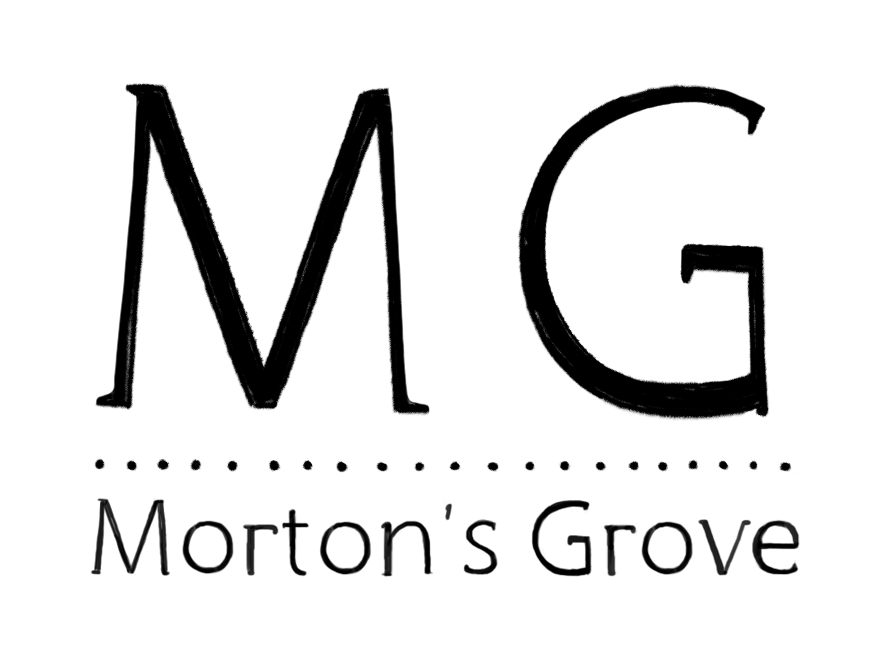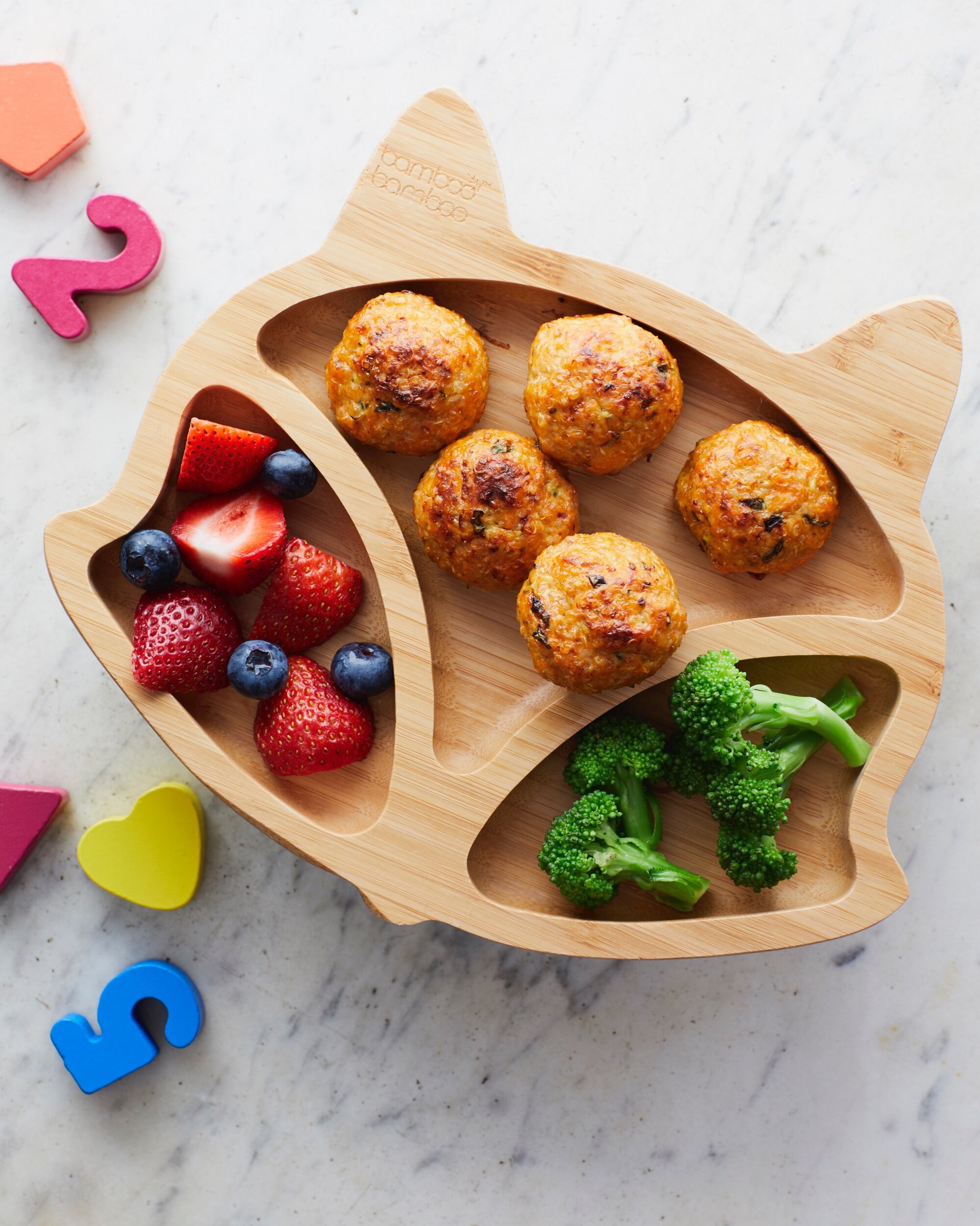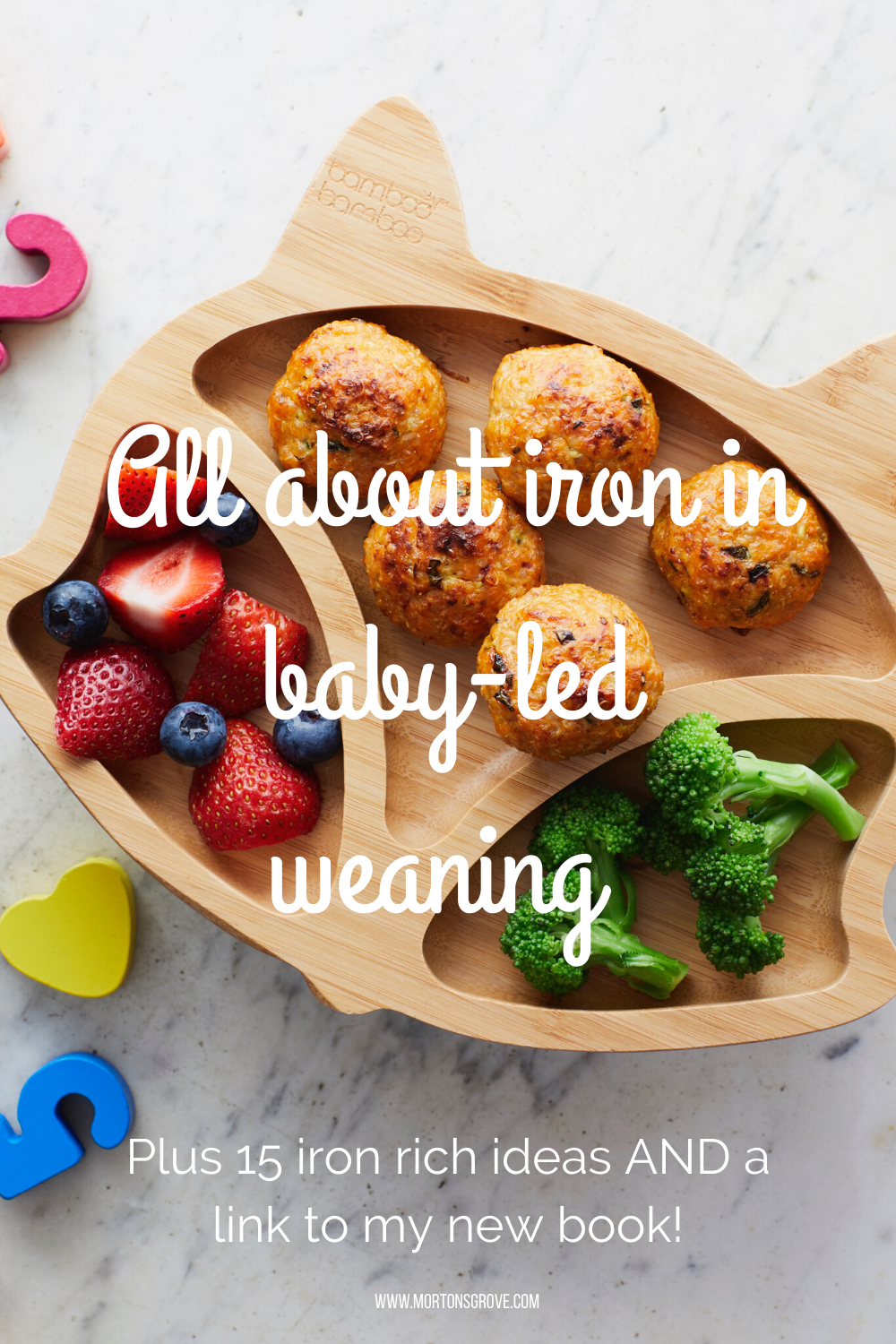Around 6 months old, full-term babies are beginning to run out of the stores of iron they built up during the third trimester. After this point, babies begin the transition to dependency on exogenous iron - iron from outside sources (like food, breast milk, or formula) rather than depending on internal stores. Formula fed babes are covered as long as their formula is iron-fortified (which almost all are in the US) and also get the nutrient from iron rich foods. Breastfed babies get iron from breast milk in a form that is extremely efficiently absorbed, and should also begin receiving iron rich foods around 6 months.
Iron is a super interesting nutrient because absorption and utilization are dependent on a lot of different factors like type of iron consumed, current iron status, and foods with which the iron rich food is eaten. Absorption of iron is based on need - a baby with good iron stores absorbs less iron from breast milk or formula than one with poorer stores. In fact, breast milk usually contains the exact right amount of iron to complement baby’s iron stores.
The American Academy of Pediatrics recommends an iron supplement for all breastfed babies (1 mg/kg/day beginning at 4 months - this number is the estimated daily requirement of iron at this age). ALL of them. This recommendation comes from the concern that breastfed babies may end up with iron-deficiency anemia (a very common nutrient deficiency worldwide) based on the fact that breast milk is technically low in iron. The thing is, full-term, exclusively breastfed babies typically do not end up iron deficient.
Breast milk is low in iron if it is broken down into components like it was just a box of cornflakes, but breast milk isn't like just any old food. If there were ever a true super-food, breast milk would be it. This wonder beverage has exactly the right amount of vitamin C and lactose to make iron absorption super efficient (50-70% absorbed from breast milk vs 4 -10% from fortified rice cereal). And because of the unique way that iron is absorbed that I mentioned earlier, supplemental iron can actually interfere with ability to absorb iron from breast milk.
If you are concerned about the possibility of iron deficiency, definitely discuss with your pediatrician. Supplementation is effective in reversing iron deficiency, however in babies where iron deficiency is unlikely (full-term, exclusively breast fed babies who were not considered small for gestational age at birth):
Including iron rich foods around 6 months of age and on is a nutritionally sound way to ensure baby’s iron needs are being met.
Tips for ensuring baby is getting the most iron:
1. If you’re a breastfeeding mom, make sure you are eating an iron rich diet (small amounts of iron are transferred to breast milk).
2. Don't let concern of getting any certain nutrient ruin the fun and excitement of feeding your babe. Eating a lot of different foods over the course of the week will almost always get you where you need to go. For reference, babies 7-12 months need about 11 mg iron per day.
3. Include both plant and animal based iron. I tend to offer my 8 month old a lot of plants, but the type of iron found in animal products may be more efficiently absorbed (see below for options).
4. Serve iron rich foods with fruits and vegetables. Vitamin C increases absorption of iron (vitamin C is found in almost all fruits and vegetables, so if your babe is eating fruits and vegetables over the course of the day, you are likely covered and are also an amazing person and mother for this and many other reasons).
5. Avoid offering cows milk before baby turns one (yogurt and cheese are great, just not milk yet).
Iron Rich Ideas Perfect for Baby-led Weaners
1. Try roasted pumpkin or pumpkin puree.
2. Serve slow cooked, tender shreds of beef. You can also puree beef with nutrient backed bone broth if serving it whole is too intimidating.
3. Mash beans and form into patties for easy pickup.
4. Form cooked lentils into mini loaves that are easier to pick up, or simply cook and mash.
5. Make mini beef and liver meat loaves in a muffin tin.
6. Roasted, unsalted seaweed strips (try wrapping them around avocado).
7. Roll avocado in ground flax seed (makes it easier for babe to pick up! Or if you're my babe, to smash into smithereens) or stir flax into yogurt or oatmeal.
8. Mix chia seeds with a little orange or prune juice and allow to thicken into a pudding.
9. Cook with a cast iron skillet. It adds dietary iron especially to acidic foods.
11. Three words: Prune Jello Jigglers (picked this one up as a dietetic intern at a retirement home).
12. Use blackstrap molasses to lightly sweeten foods like pancakes, waffles, or oatmeal (it's SO good - I put it in coffee with cream sometimes).
13. Introduce iron rich seafood like cooked oysters or de-boned sardines.
14. Add bone broth to purees for an extra dose of easily absorbed heme iron.
15. Beef or turkey quinoa meatballs (pictured at beginning of post)
For more information on introducing solids with BLW, check out my new book! (The link below is an affiliate link, which means a small chunk of each book sale goes directly to me and my fam <3)
Although I am a Registered Dietitian and Licensed Nutritionist, this information is general in nature and intended to share my knowledge and experiences. If you are concerned about your child’s iron status, or any other health concern, please talk to your child's pediatrician and make an appointment with a Registered Dietitian.







